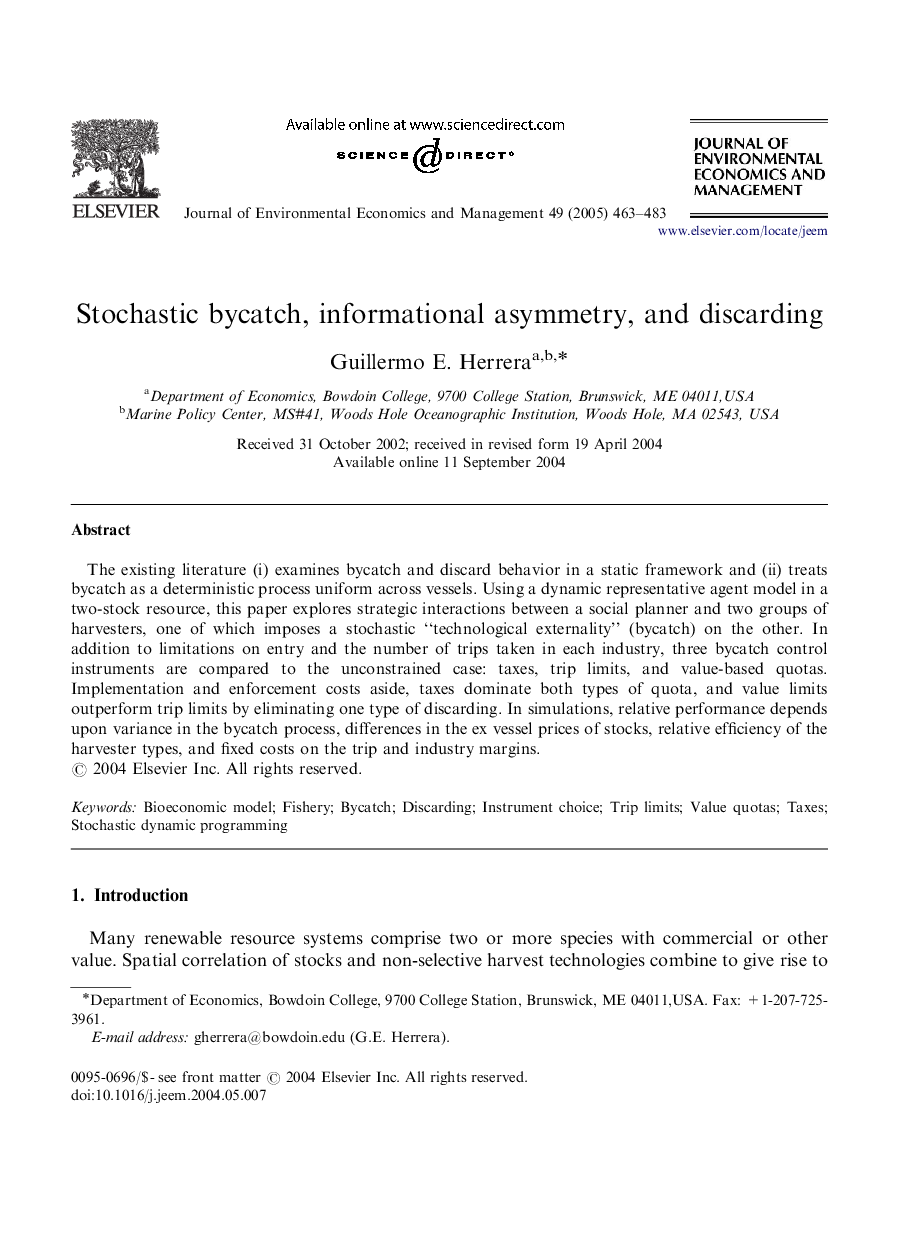| Article ID | Journal | Published Year | Pages | File Type |
|---|---|---|---|---|
| 10475409 | Journal of Environmental Economics and Management | 2005 | 21 Pages |
Abstract
The existing literature (i) examines bycatch and discard behavior in a static framework and (ii) treats bycatch as a deterministic process uniform across vessels. Using a dynamic representative agent model in a two-stock resource, this paper explores strategic interactions between a social planner and two groups of harvesters, one of which imposes a stochastic “technological externality” (bycatch) on the other. In addition to limitations on entry and the number of trips taken in each industry, three bycatch control instruments are compared to the unconstrained case: taxes, trip limits, and value-based quotas. Implementation and enforcement costs aside, taxes dominate both types of quota, and value limits outperform trip limits by eliminating one type of discarding. In simulations, relative performance depends upon variance in the bycatch process, differences in the ex vessel prices of stocks, relative efficiency of the harvester types, and fixed costs on the trip and industry margins.
Keywords
Related Topics
Social Sciences and Humanities
Economics, Econometrics and Finance
Economics and Econometrics
Authors
Guillermo E. Herrera,
